Desk
The abundance of biographies out there published during lockdown suggests people are finding time to do things they wouldn’t normally do. Well here is my contribution: writing about my desk.
It may seem odd, but my desk is one of my first thoughtful adventures into making my own furniture. The motive was simple: to make a desk that did what I wanted it to do.
If you have limited expectations about what a desk should do, buy one from IKEA or any other shop and get use to it. However, if you have ever sat at a desk and thought “Wouldn’t it be nice if..” followed by any improvement such as “lit better” or “had a place for my pens” or “was easier to clean” or “could charge my phone” or “would hide my keyboard when I don’t need it” then read on.
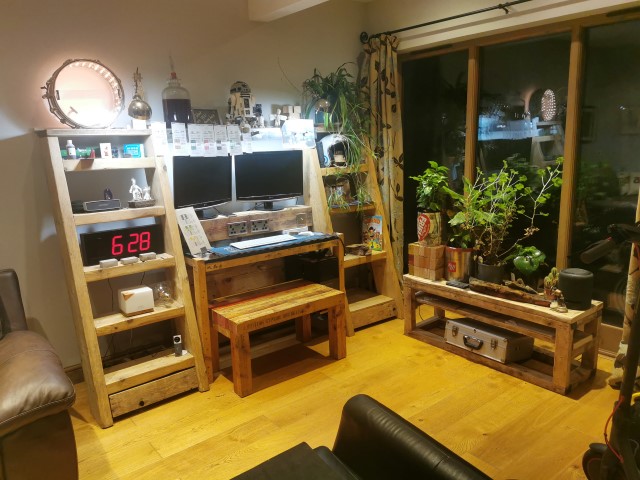
The desk is the bit in the middle – either side are freestanding shelves I made out of some old vintage scaffold boards with sliding ‘drawers’ at the bottom. Here’s more about the desk..
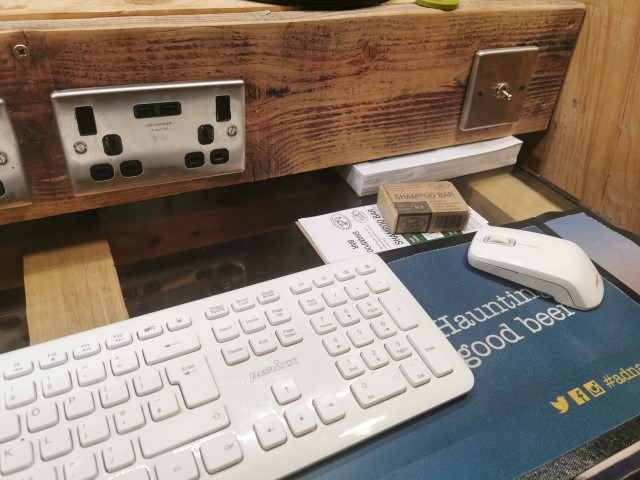
One of the first things you might notice is that my desk has plugs for mains things and also USB charging ports. I’ve always thought that working at a desk needs power for all sorts of things, so why not make it easy to plug in rather than reach underneath or behind or wonder where that extension lead is? I am not a fan of plastic, so the sockets were from Screwfix but made from ‘brushed stainless steel’ which always gets me excited! So I added three double sockets to the desk, all with USB charging facilities. It’s amazing how useful it is to have power where you need it.
There’s loads in the above photo that I’ve taken for granted: the double-glazed top that you can take off and clean independently; the rescued beer mats that serve as a great mouse-mat; the gap to allow the keyboard (or envelopes) to be hidden away. One of the things I know you can’t see is this:
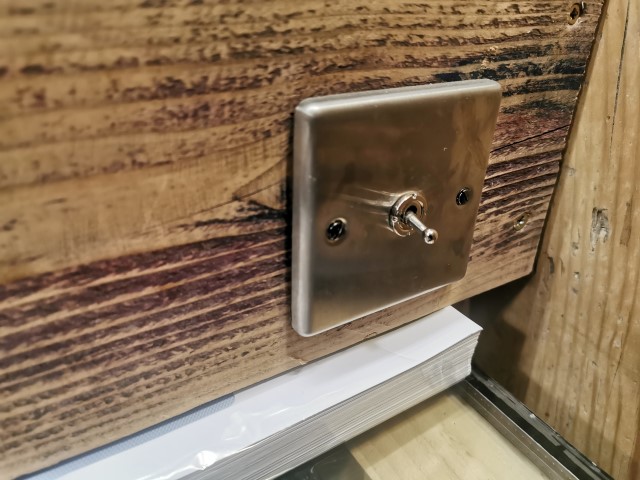
Yes, it’s a light switch. But not just any light switch it’s an M&S light switch! Seriously, behind the switch is a Sonoff Mini smart controller. What this means is that you can of course turn the desk lights on and off by doing it old time: flicking the switch. But you can also turn the desk lights on remotely, on an app or through Alexa or Google using your voice. If nothing else, when I go to bed and realise I’ve left the the lights on I can just tell Alexa to turn them off. Also, as with other lights in the house I schedule them to come on or off at certain times so that I don’t have to worry about leaving them on. If you are one of those people who think your house is a prime target for burglars, you can of course turn them on and off at any time however often you want giving the impression you’re burning an erratic midnight oil..
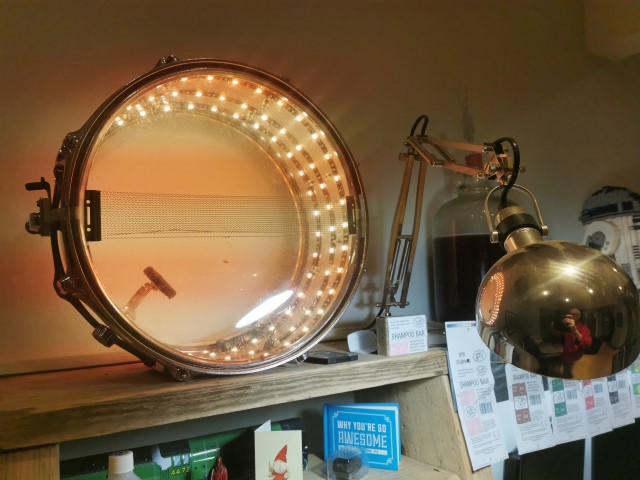
Slightly moving away from the desk you’ll notice this light. It’s an old snare drum that I rescued from an imminent journey to the tip. Again, using some tech from Sonoff I turned into a light that always makes me smile by creating a light that matches my mood. For some strange reason, Alexa doesn’t like turning it red but happily turns pink if I tell it.
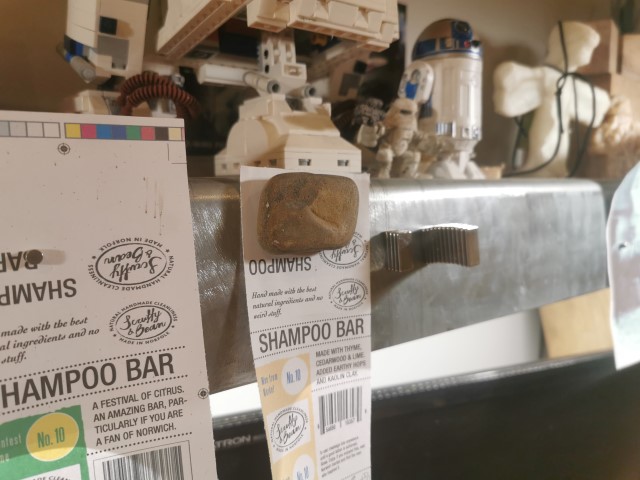
The lighting for the desk is delivered by two traditional angle poised lamps and a string of LEDs controlled by the smart switch mentioned before. Acting as a shade, a steel sheet shown above was rescued from a local fabricators. It also acts as a notice board. The stack of magnets is my magnetic stationery cupboard – including the Winterton beach-stone with neodymium magnet superstuck to it.
Even the Jesus figure has a story – something I made many years ago using a material called polymorph. R2D2s are also worth a mention as I grew up in the town where the original StarWars films were made.
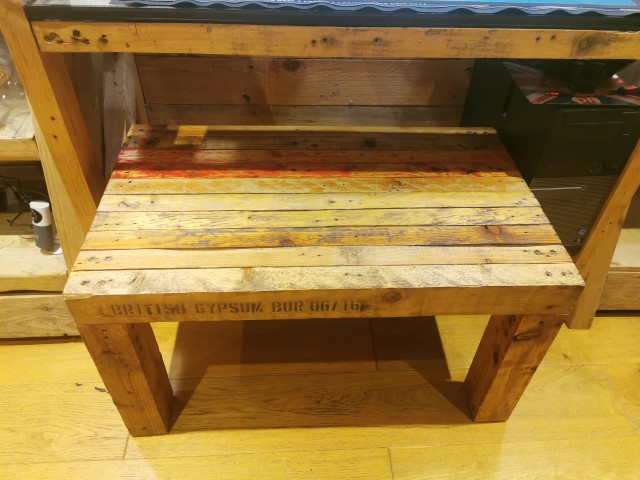
The seat is made from pallets load bearers (like most of the desk), and nothing else. I made it for my son as a coffee table when he was at University in Sheffield. It weights loads, but survives as an heir-loom in my place and work seat for the desk. It also survived many attempts to fit as many people on it as possible. I believe they managed 10.
And lastly..
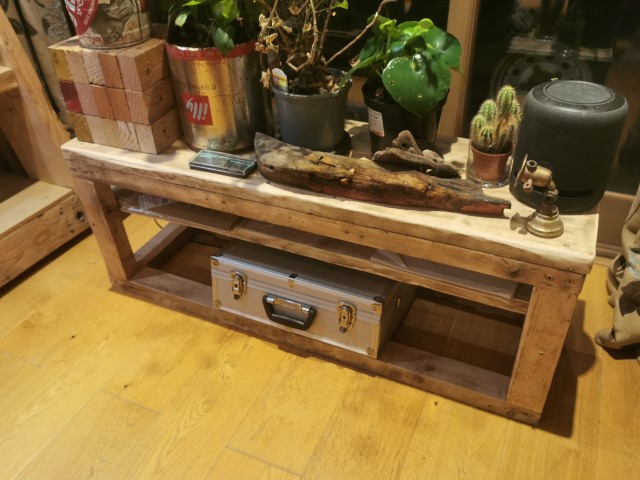
One of the wonderful things about making your own furniture is that you’re not too worried about messing around with it and ‘re purposing’ it. The thing above on which the plants stand was orignally made as an upright set of adjustable shelves. Later it moved with me to become an outside plant stand, then with the addition of some scaffold boards became what it is now (I am not sure what you call it). Whatever it is, the fact that I made it makes it easier to mess around with into something new.
So there we are. This is my desk and some of the things around it. Next time you are thinking about furniture – give it some thought and try to make your own.
